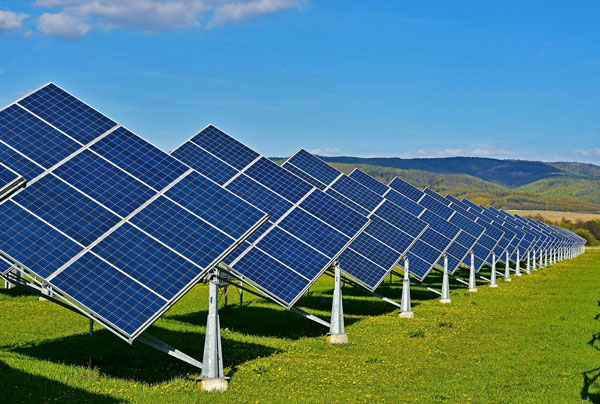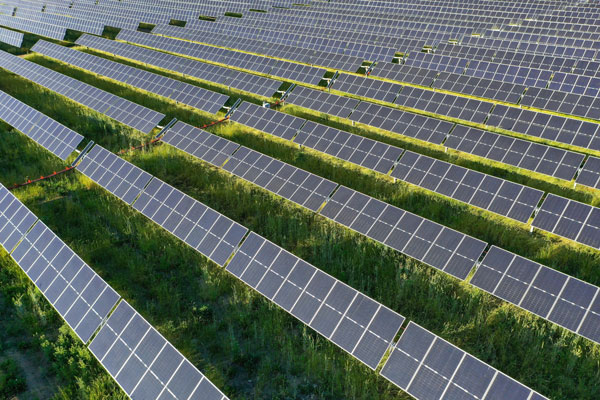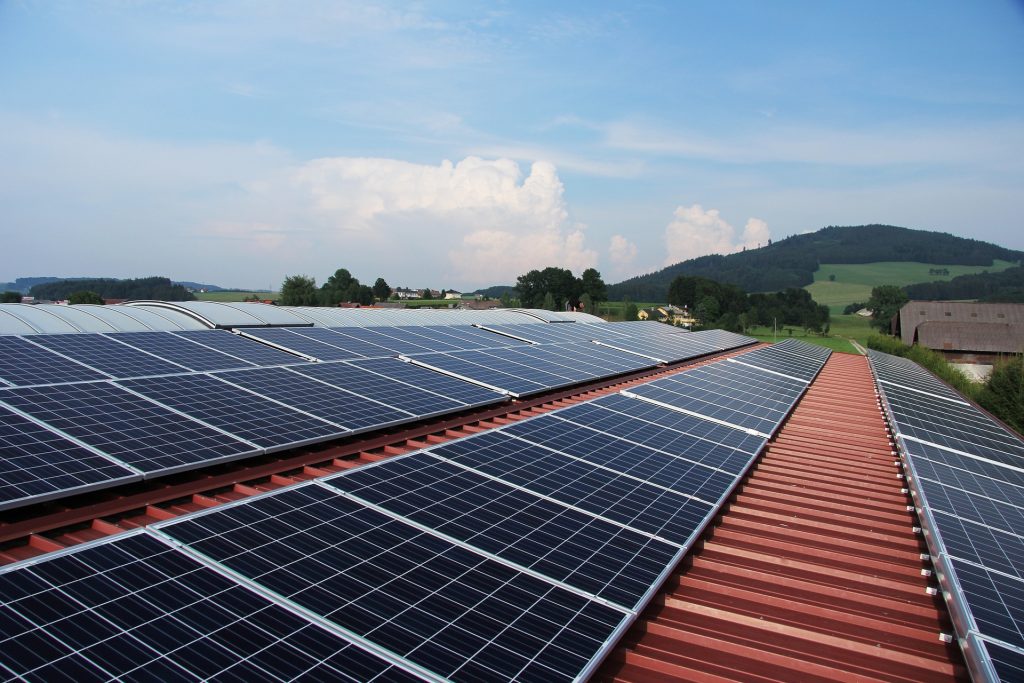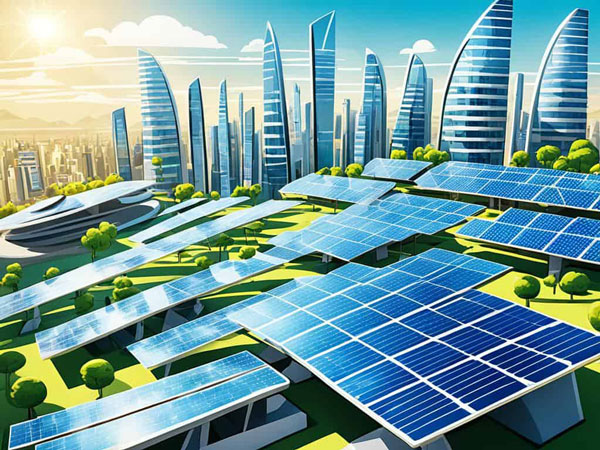Energy Independence and Security
Community and Distributed SolarEnergy independence at the local level. reduce reliance on imported fuels, and pump money into the local economy This would allow municipalities to produce their own electricity, and would stabilize and fix costs of energy which municipalities use.
Local Economic Boost
Base Effects: Local Economic Benefits, Especially Jobs, From Distributed Solar Adoption The installation, maintenance, and operation of solar panels creates inherently local jobs that can never be outsourced. In the United States, the solar industry employed around 250,000 people in 2019 and job growth has persisted as solar has gained prevalence.
Enhanced Grid Security
Distributed solar energy helps to fortify the national grid by taking some of the stress off centralized power plants and transmission lines. Not trusting to one power generation resource makes the grid harder to disrupt using failures or even attacks. If centralized power systems may fail, such as during natural disasters, there may still be power from solar panels on homes or local microgrids to provide some power.
California Solar Initiative Case Study
Launched in 2006, the Million Solar Roofs Initiative in California aimed to see solar panels installed on a million buildings. The state had not only reached this goal by 2017, but saw a dramatic reduction in the price of installing solar, declining by 77%. The scale of this initiative also shows that solar can also be cost effective and that demand will stimulate employment in the renewable energy sector.
Incentives/financial support
Solar energy is often incentivized by local governments, they may offer tax breaks, rebates, and grants to encourage the installation. The rebates, like all of these incentives, are to make solar projects more affordable and appetizing to home and business owners. In the U.S. the Investment Tax Credit (ITC) allows a 26% tax credit applied against the to cost of the solar system on both residential and commercial properties, lowering the cost to install solar and accelerating the payback period.

Reduction in Energy Transmission Losses
Solar Energy Distributed Generation is a technology that helps managing energy losses on transport and distribution of electricity from Long line centralized plants to end-users. Solar panels generate electricity close to where it is used, greatly shortening the distance electricity needs to be transported across and reducing transmission losses.
Energy Delivery Efficiency
The losses due to heat in transmitting electricity over long distances lies between 5 to 8 percent depending on the distance and health of the infrastructure. Distributed solar systems - like those you install on or near your home - all but eliminate these losses, creating a more efficient energy distribution system. The upsides of this increased efficiency are twofold: it conserves energy and saves utilities (or their customers) money.
Local Generation Cost Savings
Distributed solar generation locally in this way dramatically reduces the burden on transmission and distribution networks. The reduction can postpone or obviate millions of dollars to be spent by utilities in upgrading their infrastructure. In California alone, a study found that if distributed solar PV becomes widely adopted, the state could halt the need for $20 billion in new transmission lines over the next ten years.
Brooklyn Microgrid Case Study
The Brooklyn Microgrid in Brooklyn, New York helps to show the value of a solar energy concept focused on a localized level! The microgrid is community-driven and involves wholesale distributed generation solar power sent to substations to be given to local homes and businesses. This arrangement not only minimises line losses but also enables power to be provided for the community during blackouts. The project is a shining example of how communities can use their own solar resource to meet local energy needs more affordably and cleanly.
Enhanced Energy Autonomy
In keeping with the principle of decentralization, solar-generated electricity is produced near the point of use, while reducing the number of power plants to power communities and making them less susceptible to the vulnerabilities of distant energy supply lines. This independence provides much needed energy security, but it is also a boost for local economies by allowing those closer to the energy generation to be able to re-invest their energy savings back into their communities.
Job Creation in Installation and Maintenance
Jobs generated by distributed solar energy systems are mainly in the installation and maintenance space. Job growth in this sector is associated directly with the growing prevalence of solar technologies, influencing both residential and industrial energy need.
Increases in Workforce Needed
Installing solar panels is a labor-intensive job that involves employing several qualified professionals, electricians, installers, and project managers. The Solar Foundation states that growth rate of the solar industry has been about 167% during the last decade and has added almost 156,000 works. The fact that we are seeing triple that increase in local job creation in each successive quarter really highlights the power of distributed solar to create local jobs.
Education and Training
Long with the growth of the industry comes new educational opportunities for those looking to become solar technicians with many technical schools and community colleges now offering courses geared specifically to training this new army of solar techno soldiers. These programs are typically designed in partnership with industry to keep the content current to industry requirements. North American Board of Certified Energy Practitioners (NABCEP) certifications are highly regarded across the industry and significantly benefit graduates with employment prospects.
Solarize Philly
An example of job creation by utilizing distributed solar includes the program Sustainability Coordination Office, Solarize Philly in Philadelphia. First launched in 2017, the program seeks not only to boost the number of solar installations throughout the city, but also to provide workforce development and job placement services in low-income communities. To date, over 100 persons have been trained by the program, many of whom have found gainful, permanent employment in the solar installation trade.
Maintenance and Operations
In addition to installation, the continued maintenance and operation of solar systems provides consistent, long-term jobs. They usually only have a lifespan of 25 to 30 years, and just as with any other part of a package, regular maintenance is needed for them to work optimally. Service agreements that span the life of an installation are parts of an increased offering that companies offer, and this provides job security in the long term with regular repairs, system monitoring, and check-ups.
Boosting Local Manufacturing of Solar Products
The distributed solar power growth has a huge multiplier effect on local manufacturing sectors of solar products. For regions that are attempting to strengthen their renewable energy grid, this impact is even greater.
Skills and Competency Development in supply chain
The need for local manufacturing increases as demand for distributed solar systems accelerates There are rising opportunities for the manufacturers of solar panels, inverters, mounting systems and other related assets in the local market. In states such as Ohio, home to a robust manufacturing industry, companies have shifted manufacturing to produce solar-connected products, boosting its economy while expanding the renewable energy sector.
Local Infrastructure Investments and Expansions
In order to cater the ever increasing demand companies are making the new facilities and expanding the existing one. The reach that this investment is having is not only limited to manufacturing but also to R&D facilities focused on enhancing the efficiency and cost profiles of the solar technology. A good example is the Solar Technology Park landed in Orelgon, where hundreds of high-tech solar jobs were created to of multiple manufactures and researchers.
Michigan Solar Manufacturing
As Michigan, with its automotive industry history, follows suit, the state is experiencing robust growth in solar product manufacturing. Incentives such as tax credits and grants to encourage green industries have led companies, such as SunPower and First Solar, to set up manufacturing plants in the region. While the economic boost at the local level is definitely one of the key drivers for building these facilities, the creation of a competitive supply chain also spurs an economic boon.
Education and Training Collaboration
Particular Partnerships with Industry and Educational Institutions to Promote Local Manufacturing These partnerships provide a regular supply of trained workers with the most up-to-date solar technology experience. Collaboration among manufacturers and community colleges or technical schools results in curricula focused on necessary skills, so graduates are job ready.
Enhancing Community Resilience
Local distributed solar energy systems also greatly increase community resilience through offering stable power sources closer to home, which are not subject to large-scale centralized outages. The distributed nature of energy production means power will still be available when disaster, either natural or manmade, occurs.
Enhanced Community Energy Sovereignty
In this way, communities with distributed solar power are protected from national grid failures, can reduce their electricity costs, and can improve their overall energy security, as a whole. Local generation provides the ability for communities to power critical facilities such as hospitals, emergency services, and water treatment plants, even during blackouts. Distributed solar power-powered communities were able to recover and bring back electricity much quicker than communities that had been completely reliant on the grid during Hurricane Sandy in 2012.
Microgrid Integration
A microgrid is a local energy system with control capability, which means it can disconnect from the traditional grid and operate autonomously; it usually includes solar panels. And, they greatly contribute to building community resilience. After Hurricane Maria, microgrids were successfully deployed in Puerto Rico to support critical facilities and provide reliable power to remote locations.
Lower Utility Bills Mean More Economic Security
Local solar energy helps stabilize local economies by insulating them from the volatility of fossil fuel prices. Lower energy costs allow households and smaller businesses to save money, redirecting funds to other economic activities and supporting local economic development. This economic sustainability is the key for times of economic recession or energy price hikes.
Investing in Community Engagement and Ownership
Community-owned solar initiatives raise the level of local engagement and the investment in renewables, instilling both a sense of pride and collective responsibility. This often results in positive community cohesion and social resilience. Community solar gardens, the law in Colorado which lets many individuals share in the output of one solar array, have been a huge catalyst for people to support and get more involved with clean power.

Supporting Local Renewable Energy Initiatives
Beyond the economic and environment benefits of distributed solar energy, these systems are critical to enabling other local renewable energy efforts. These initiatives spur innovation, collaboration, and build a more resilient community.
Local Policies and Incentives
As local governments see more advantages of distributed solar power, they are starting to promote pro-policies local to expand distributed solar power. It is incentives, such as tax credits, net metering and more recently subsidized loan programs, that drive a significant portion of residential and commercial solar installations. The city of Austin, Texas, offers rebates and loans for solar panel installations to help meet its objective of a carbon-neutral economy by 2050.
Working with Local Businesses and Nonprofits
WINDSOR - Local renewable efforts are most likely to succeed when municipalities team up with local businesses and nonprofits. By pooling resources, solar projects are larger and have greater impact, and the cost of undertaking the project can be amortized over shared costs of design, construction, and improved financing availability. One notable example of such partnerships is the Solarize program, which has been implemented in a number of U.S. cities. Group purchasing schemes reduce installation cost significantly under this program.
But if nothing else, we need to educate our community so it will be more supporting of renewable energy initiatives. Workshops, school programs and public demonstrations are usually held by communities in order to educate people on solar energy and the ways they can engage in it. Educational programs are another approach adopted by TNC to raise awareness and secure community buy-in for local renewable energy policies.
Using local resources to produce energy
They find and use their local assets to increase their renewable chances. Unused municipal lands and rooftops are turned into solar plants. Other ExamplesIn San Francisco, the Public Utilities Commission has installed solar projects on city-owned properties that in total produce a lot of electricity and are great examples of what municipal-led solar can do.





